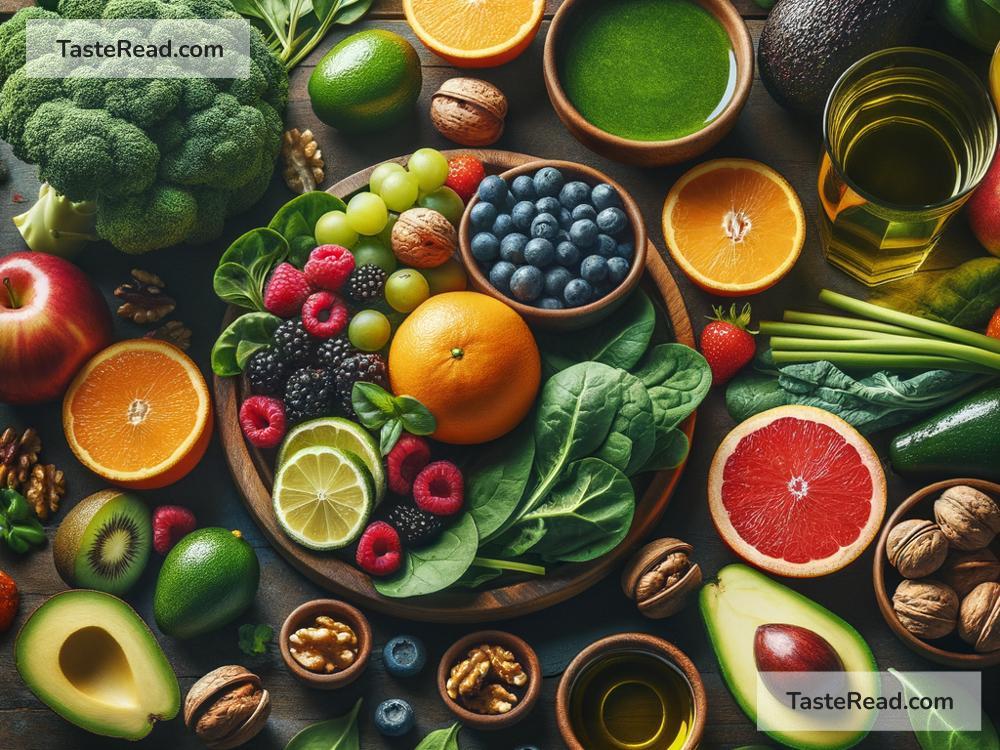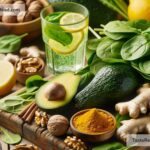Foods for Reducing Spider Veins: Eat Your Way to Healthier Legs
Spider veins are those tiny, web-like red, blue, or purple lines that often appear on our legs or face. Many people find them frustrating, not only because they can be a cosmetic concern, but also because they might point to underlying circulation issues. While there’s no magic cure for spider veins, eating certain foods can help improve blood flow, strengthen veins, and reduce inflammation over time. In this blog post, we’ll explore some simple and delicious foods that can support healthier veins.
What Causes Spider Veins?
Spider veins happen when tiny blood vessels under the skin weaken or become damaged. Poor circulation, aging, genetics, sitting or standing for long periods, pregnancy, or excess pressure on the veins can be contributing factors. The good news is that your diet can play a big role in supporting vascular health. By eating specific foods, you can improve your circulation, reduce inflammation, and help prevent or reduce spider veins from forming.
Foods That Help Reduce Spider Veins
1. Citrus Fruits (Vitamin C Powerhouse)
Citrus fruits like oranges, lemons, grapefruits, and limes are excellent sources of vitamin C. Vitamin C is essential for making collagen, a protein that keeps veins strong and flexible. Strong veins are less likely to weaken or develop spider veins. Plus, vitamin C improves blood circulation, which helps prevent pooling in the veins.
How to eat more: Start your day with a glass of fresh orange juice, add lemon slices to your water, or enjoy citrus-packed fruit salads.
2. Leafy Green Vegetables (Packed with Vitamin K)
Spinach, kale, and other leafy greens are rich in vitamin K, which plays an important role in blood clotting and strengthening blood vessels. Improved vein health means fewer spider veins over time. Plus, leafy greens are also high in fiber, which can help prevent constipation—a common issue that increases pressure on veins.
How to eat more: Add spinach or kale to smoothies, salads, or soups for an easy boost.
3. Berries (Rich in Antioxidants)
Berries like blueberries, strawberries, raspberries, and blackberries are rich in antioxidants, especially anthocyanins. These compounds protect veins from damage caused by oxidative stress and improve overall vascular health. Berries also improve blood circulation, making them superfoods for vein health.
How to eat more: Add fresh berries to yogurt, oatmeal, or smoothies for a sweet and nutritious snack.
4. Ginger and Garlic (Natural Blood Circulation Boosters)
Ginger and garlic are popular for their ability to boost circulation and prevent blood from pooling in the veins. They contain compounds that can dissolve fibrin, a substance that forms around damaged veins and makes spider veins stand out more. Better circulation means your veins will function properly and look healthier.
How to eat more: Use ginger and garlic to flavor soups, stir-fries, or marinades. Ginger tea is another great option.
5. Avocados (Full of Healthy Fats and Vitamins)
Avocados are loaded with healthy fats and antioxidants like vitamin E. Vitamin E helps improve vein elasticity and prevents blood clotting. Avocados also support overall heart health, which is closely tied to vein health.
How to eat more: Add avocados to salads, sandwiches, or make guacamole for a delicious dip.
6. Whole Grains (Fiber for Good Digestion)
Eating whole grains like oats, quinoa, brown rice, and whole-wheat bread can help promote better digestion, reduce constipation, and prevent excessive pressure on your veins. When digestion is smooth, your blood flow improves, which benefits vein health.
How to eat more: Swap refined grains like white bread with whole-grain alternatives, and start your day with a hearty bowl of oatmeal.
7. Nuts and Seeds (Rich in Magnesium and Vitamin E)
Almonds, walnuts, sunflower seeds, and chia seeds are packed with magnesium and vitamin E, which work together to keep veins healthy. Magnesium helps relax and widen veins, improving blood flow, while vitamin E strengthens vein walls.
How to eat more: Snack on nuts and seeds, sprinkle chia seeds on yogurt, or add a handful to salads for crunch.
8. Dark Chocolate (In Moderation!)
Good news for chocolate lovers: small amounts of dark chocolate (with at least 70% cacao) contain flavonoids, compounds that improve blood circulation and relax blood vessels. Just don’t overdo it—moderation is key!
How to eat more: Enjoy a square of dark chocolate for dessert or melt it into your oatmeal for a guilt-free treat.
9. Tomatoes (Boosting Blood Flow)
Tomatoes are rich in lycopene, a powerful antioxidant that improves blood circulation and reduces vein swelling. Lycopene also strengthens vein walls, which may lower the chances of developing spider veins.
How to eat more: Slice tomatoes onto sandwiches, add them to salads, or blend them into sauces for pasta or soups.
10. Water (Keep Hydrated!)
Though not technically a food, water is essential for vein health. Staying hydrated keeps your blood thinner and flowing smoothly, preventing vein damage caused by sluggish circulation. Proper hydration also helps flush toxins from the body, reducing inflammation.
How to drink more: Carry a water bottle with you, sip on herbal teas, or add fruit slices to your water for flavor.
A Healthier Plate for Healthier Veins
Spider veins may not go away entirely with diet alone, but eating foods that improve circulation and support vein health can make a real difference. A balanced meal with fruits, vegetables, fiber, healthy fats, and plenty of water is your best bet for reducing spider veins and preventing new ones from forming. Pair healthy eating with regular movement, such as walking or stretching, to further support your vascular system.
The great news is that the foods listed above are easy to find, delicious, and packed with nutrients. So go ahead and include them in your daily meals—your veins will thank you!


